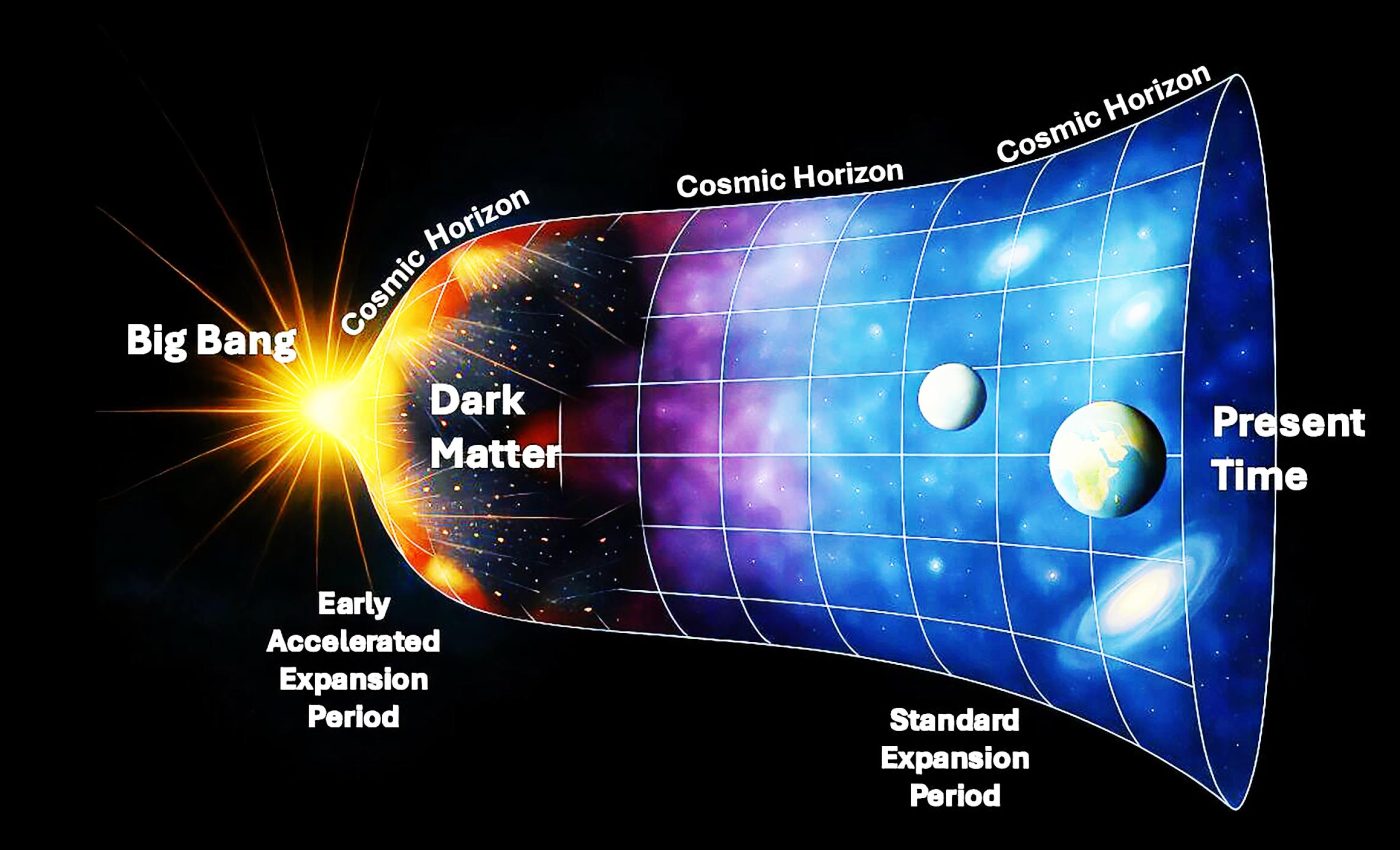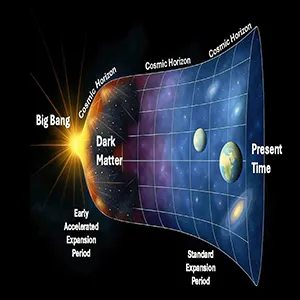
New theory suggests dark matter came from a hidden 'mirror world'
Physicists can map its gravity, tally its cosmic abundance, and observe its fingerprints in the microwave glow of the Big Bang. Yet no one has ever detected a single particle of dark matter in the laboratory.
That enduring mystery drives much of today’s theoretical physics, and few researchers are pushing the boundaries more vigorously than Professor Stefano Profumo at the University of California, Santa Cruz.
In two recent papers, Profumo offers separate – yet thematically linked – visions of how dark matter might have emerged naturally from the earliest moments of cosmic history rather than through new interactions with ordinary matter.
Dark matter from a “mirror world”
The first study, published in the journal Physical Review D, asks whether dark matter could consist of ultra-compact black-hole – like objects forged in a hidden sector that mirrors the familiar world of quarks and gluons.
Drawing inspiration from quantum chromodynamics, Profumo and collaborators imagine a “dark QCD” with its own quarks, gluons, and strong nuclear force.
In the scorching seconds after the Big Bang, dark quarks could have bound into heavy composite states – dark baryons.
These baryons may have later collapsed under their own gravity, leaving behind relics only a few times heavier than the Planck mass.
These remnants interact only via gravity, slipping past detectors while explaining the universe’s missing 80 percent of matter.
This scenario nods to a rich Santa Cruz pedigree. Former UCSC professor Michael Dine helped pioneer the QCD axion hypothesis, another leading dark-matter idea.
Research Professor Abe Seiden also contributed to experiments probing the internal structure of hadrons.
Profumo’s work revives that tradition, extending well-tested gauge theories into a shadow realm. It reveals a new way composite physics might answer the dark-matter riddle without contradicting existing data.
Dark matter in an expanding universe
Profumo’s other paper, published in the same journal, pivots from hidden sectors to the fabric of spacetime itself.
He explores the possibility that an episode of accelerated expansion after cosmic inflation could have generated dark matter particles.
This expansion was slower than primordial inflation but faster than what ordinary matter or radiation would allow, resembling how a black hole’s event horizon is predicted to radiate.
Using quantum field theory in curved spacetime, he calculated that a brief phase of quasi-de Sitter expansion could “heat” the universe’s horizon.
This process would spontaneously produce an ample abundance of stable, non-interacting particles over a broad mass range.

No additional forces or couplings are required; gravity alone does the job. Both mechanisms avoid needing detectable interactions, which increasingly sensitive underground experiments have repeatedly failed to observe.
“Both mechanisms are highly speculative, but they offer self-contained and calculable scenarios that don’t rely on conventional particle dark matter models, which are increasingly under pressure from null experimental results,” explained Profumo.
Architecture of the universe
Profumo literally wrote the textbook on this pursuit. His 2017 volume An Introduction to Particle Dark Matter remains a touchstone for students and researchers alike.
The new studies continue UCSC’s long-standing approach of fusing particle theory, cosmology, and astrophysics. This approach helped establish the Lambda-Cold Dark Matter model currently favored by observational data.
The campus’s Institute for Particle Physics and its theorists have repeatedly shown how fresh ideas about the micro-world can illuminate the large-scale architecture of the universe.
Professor Profumo emphasized that the proposals rest on physics already in hand, not speculative new forces.
The hidden-sector picture leans on well-studied SU(N) gauge theories. The horizon-production mechanism relies on the same mathematics that underpins Hawking radiation.
Hints in gravitational waves
Neither idea will be easy to confirm. Dark-sector black holes would evade direct detection and might reveal themselves only through subtle gravitational-wave signatures or small anomalies in the cosmic microwave background.
Horizon-generated particles would likewise be invisible except through their influence on the growth of cosmic structure or precision measurements of Big Bang nucleosynthesis.
Yet both frameworks make quantitative predictions that could guide future observations. These range from the Laser Interferometer Space Antenna’s (LISA) hunt for primordial black hole mergers to next-generation surveys mapping dark matter distributions on megaparsec scales.
Meanwhile, Professor Profumo and his colleagues are refining the math. They are exploring, for instance, how different dark-QCD parameters affect the mass spectrum of possible mini-black-hole remnants.
The researchers are also examining how varying the duration of post-inflationary acceleration changes the predicted relic abundance. Each tweak produces patterns that upcoming data sets may support or rule out.
Mirror worlds and dark matter hunting
The null results piling up at direct-detection experiments have encouraged theorists to broaden their horizons, both figuratively and literally.
By rooting his models in established quantum field theory and gravitation, Profumo offers a pair of audacious yet disciplined road maps. These maps outline where dark matter might have come from – and how researchers could someday prove it.
Whether the answer lies in a shadowy confining force or in particles born at the edge of the universe’s own horizon, the work demonstrates how much fertile ground remains between the known and the unknown.
In the search for the cosmos’s invisible matter, these studies remind us that sometimes the boldest steps forward come from looking back. They point to the Big Bang’s first moments, when galaxies, stars, and hidden particles first began to take shape.
—–
Like what you read? Subscribe to our newsletter for engaging articles, exclusive content, and the latest updates.
Check us out on EarthSnap, a free app brought to you by Eric Ralls and Earth.com.
—–













